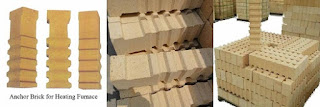Causes and treatment methods of converter tapping hole blockage
The common reasons for the steel outlet blockage are as follows: (1) There is no steel outlet blocked after the last furnace is discharged. During smelting, the molten steel and slag enter the steel outlet, which makes the outlet blocked. (2) After the slag pouring in the last furnace, the remaining steel slag in the tapping port is blocked without all chiseling, which causes the outlet of the next furnace to be blocked. (3) The new outlet is generally small and long, and the plugging is not in place. In the smelting process, the steel and slag are filled into the hole, which causes the plugging. (4) During the tapping, the slag of the lining brick and the agglomerate falling off in the molten pool enters the steel outlet, which may also cause the steel outlet to be blocked. (5) Slag ball is used to prevent slag from steel. Before the next furnace is discharged, the slag ball of the previous furnace is not poked open, which causes the outlet to be blocked. Treatmen...




